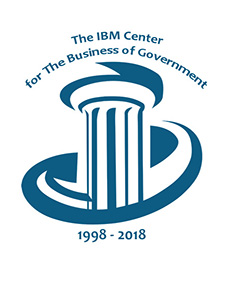
Data Rich, But Information Poor

“We are data rich and information poor,” says former Office of Management and Budget (OMB) official Shelley Metzenbaum. If that is the case, the challenge for public leaders is to figure out how to lead their organizations into the future with data.
The IBM Center for The Business of Government – as part of its 20th anniversary activities this year - is looking twenty years into the future. It recently held the fourth in a series of “Envision Government in 2040” sessions, with this session focusing on the role of data and analytics in government (earlier sessions focused on the future of work in the public sector; the potential role of artificial intelligence, and the role of citizens in government) This small group of experts in government data policy and trends discussed how the increased availability and use of data and analytics will change how public managers draw greater insights to deliver on their missions and lead their organizations into the future.
Future Trends in Use of Data and Analytics. Four trends in the use of data and analytics surfaced as part of the envision session:
- First, there is a strategic shift in the internal use of data in organizations, away from headquarters analysts to front line workers.This is already happening in the private sector. For example, UPS provides its delivery workers with real-time data on their delivery routes, truck loads, and timetables, in order to improve performance. And they conduct A/B testing using different delivery truck working conditions, for example to identify ways their truck doors won’t hit bicyclists.
- Second, there is a shift to collecting more granular data and more aggregated, integrated, and/or layered data from multiple sources. This is happening in both the private and public sectors. For example, the town of Cary, NC, gives citizens access to 38 different data sets covering restaurant inspections, auto accidents, zoning, weather, county-generated data, etc.This allows citizens and local businesses to combine and analyze data in different ways in order to inform personal and business decisions.
- Third, there is a shift to providing near-real-time data, with wider availability of these data to multiple types of users. For example, the Transportation Security Administration makes its data available on the length of time people are standing in line in different airports on a real-time basis so people can plan their arrival at airports in order to get to their flights on time.
- And finally, there is a move to greatly simplify the interpretation of data through devices such as mapping and storytelling, in order to make information more readily useful to a wider audience. For example, the Department of Labor’s veteran’s employment assistance program uses infographics to convey information about its program.
Mission-Oriented Uses of Data. In late May, OMB and the Center for Open Data Enterprise co-hosted a roundtable on ways to leverage public and private sector data as a strategic asset; attendees included IBM Center Executive Director Dan Chenok. According to observers from the Department of Commerce, the roundtable brought together “a wide array of professionals with expertise on how to best use Federal data to delivery government services and grow the economy.” Mission-oriented uses of federal data to solve public challenges were discussed at the roundtable. These included examples such as the combination of USDA nutrition data with propriety grocery store scanner records to understand the healthfulness of Americans’ dietary behavior, and integrating information about job training program participants with wage and earnings data to gauge the effectiveness of federal training programs. Other examples dealt with public problems such as housing, crime, and food security.
Management-Oriented Uses of Data. Federal administrative data can also be valuable in improving internal operations within agencies as well. For example, the Office of Personnel Management is modernizing employee digital records so it can turn off costly legacy systems. According to an interview with Federal News Radio: “The current environment is a hodgepodge of systems that pull data from 19 different systems and includes structured and non-structured data.” As a result, seemingly simple tasks, such as transferring employees from one agency to another, requires an “immense amount” of manual involvement. Also, the inability to integrate data limits the ability to conduct useful analyses of personnel trends in order to inform future staffing decisions.
What’s Needed to Get to This Future? The Administration has designated “leveraging data as a strategic asset” as one of its cross-agency priority goals. Its first step is to create a governmentwide data strategy and a governance framework to act on that strategy. This includes steps towards data integration between agencies, greater standardization, improved data quality, and greater data integrity. It may also include the designation of agency-level chief data officers to lead these efforts.
The future-oriented IBM Center session, noted earlier, also advocated the creation of more sophisticated users of data to gain insight into agency missions: people in leadership and frontline positions who understand the underlying characteristics and trends in the data being used when making decisions. While this was seen by some as aspirational, session participants point to frontline data users in companies such as UPS – where data is already a part of the lives of their truck drivers!



